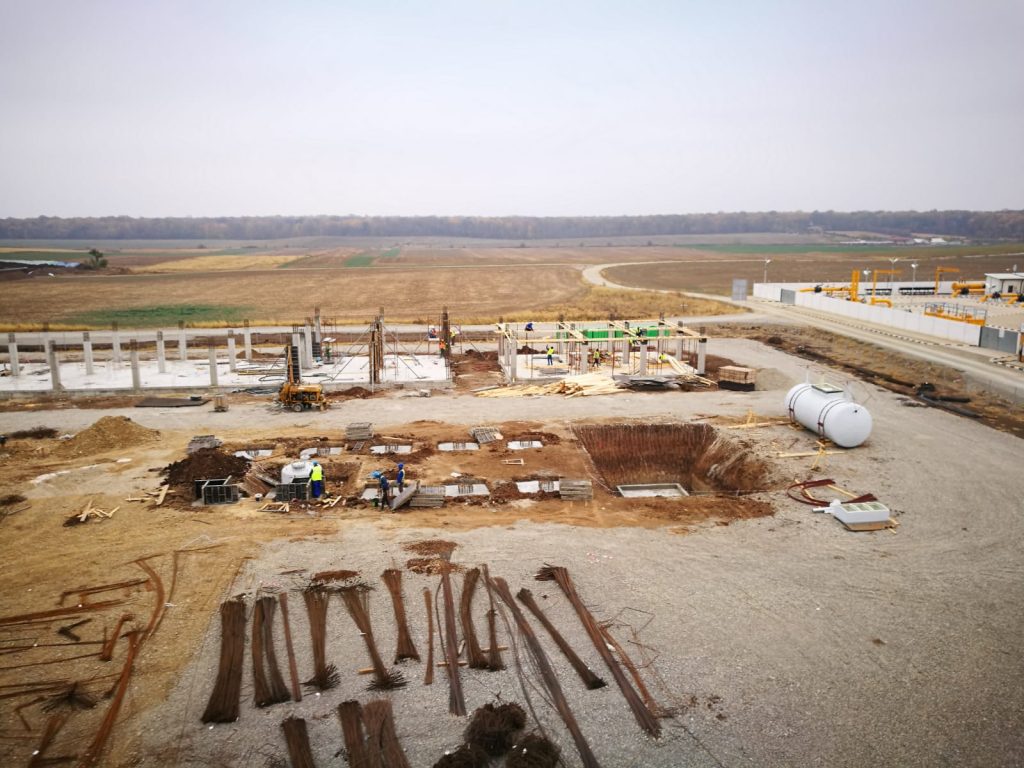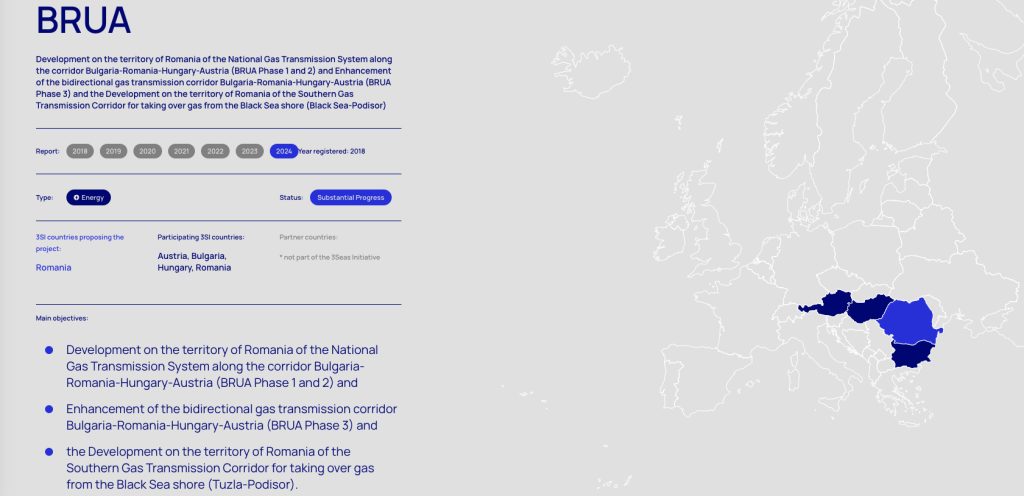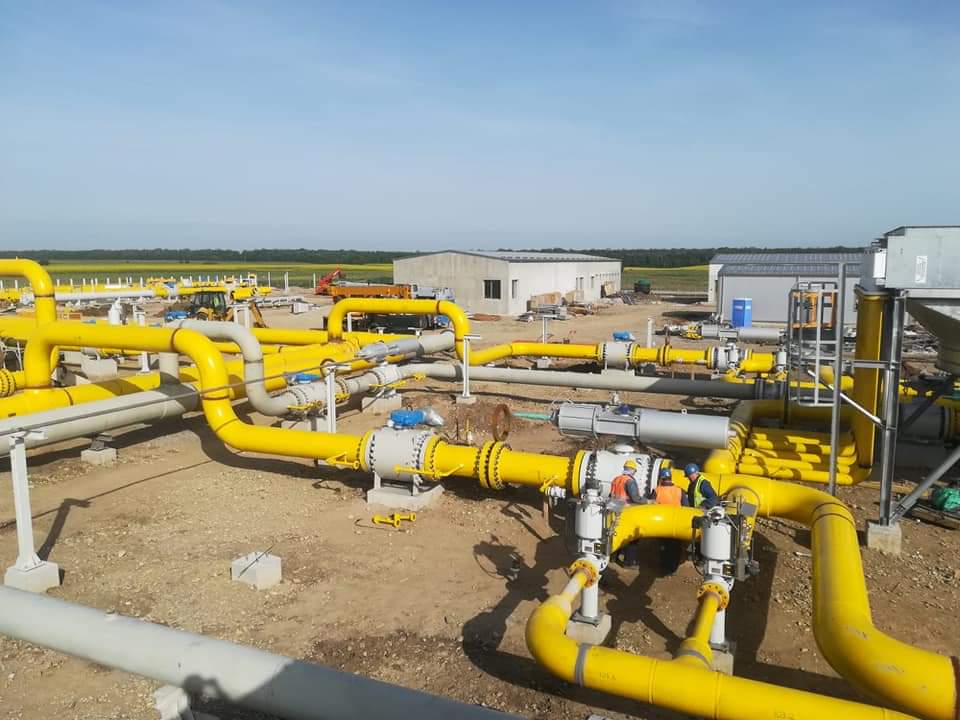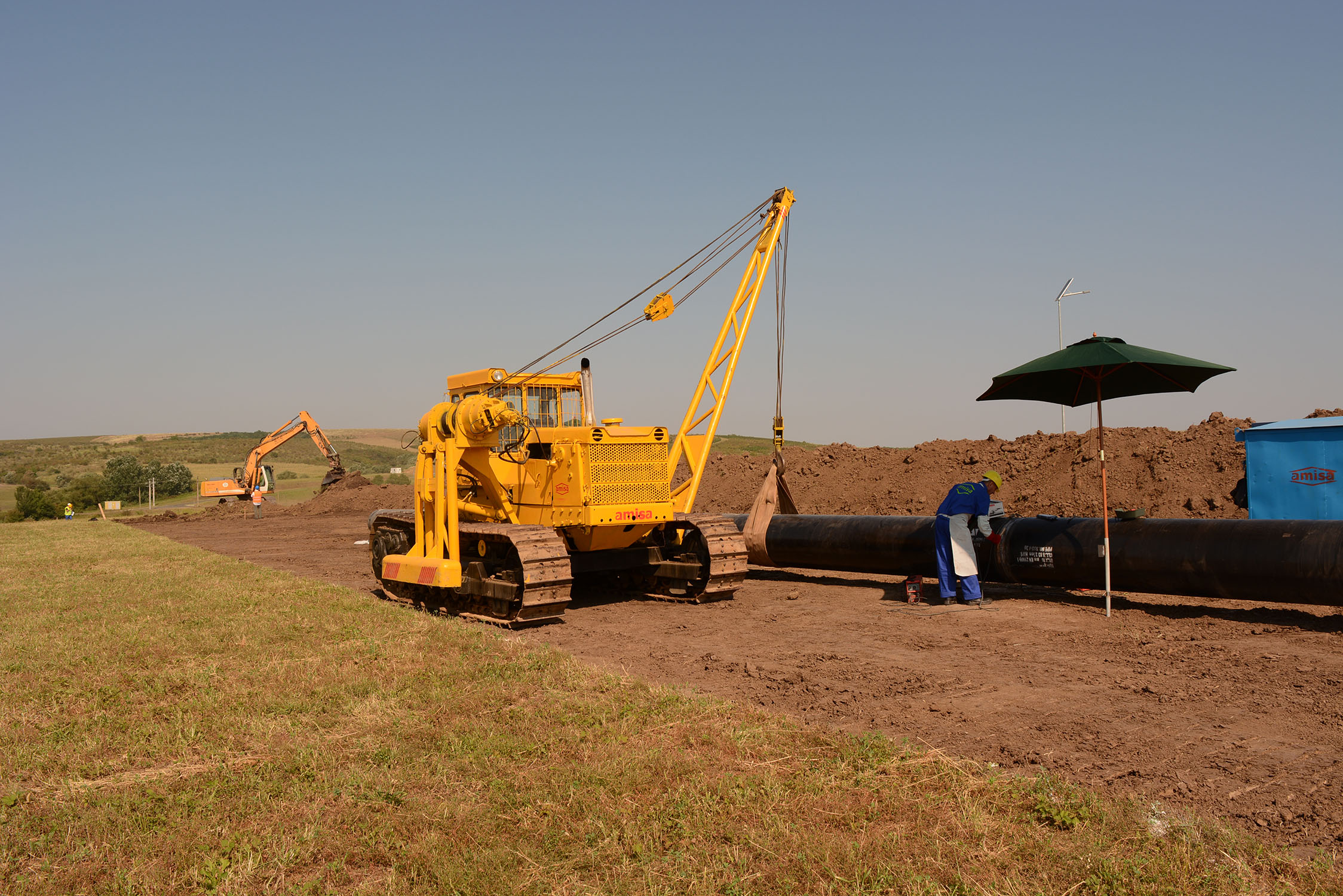BRUA, the acronym for the countries participating in this project (Bulgaria, Romania, Hungary and Austria), is a major natural gas transmission corridor with the possibility of permanent bi-directional physical flow, aimed at diversifying natural gas supplies and exploiting natural gas from these areas. This corridor allows our country to connect to regional transport corridors, accessing natural gas transport routes from the Caspian Sea area to Central Europe. It also facilitates Romania's access to European markets, which is useful for the exploitation of natural gas resources in the Black Sea through projects carried out by the companies BSOG and Romgaz in collaboration with OMV Petrom.
The BRUA project comprises several phases:
Phase 1
-
- Construction of a natural gas transmission pipeline Podișor-Recaș, with a length of 479 km, diameter of 32 inches (Dn 800) and design pressure of 63 bar.
- Construction of 3 natural gas compression stations (SCG Podișor, SCG Bibești and SCG Jupa), each station being equipped with 2 compression aggregates (one in operation and one in reserve), with the possibility of ensuring birectional gas flow.
Phase 2
-
- Construction of a natural gas transmission pipeline Recaș - SMG Horia with a length of 50 km, diameter of 32 inches (Dn 800) and design pressure of 63 bar.
- Upgrading of the SCG Podișor, SCG Bibești and SCG Jupa compression stations, each station being equipped with an additional compression unit.
- Amplify SMG Horia.
The route of the pipeline generally follows the SE-W direction and crosses the territory of Giurgiu, Teleorman, Dâmbovița, Argeș, Olt, Vâlcea, Gorj, Hunedoara, Caraș-Severin and Timiș counties.

Phase 3
According to the 3 Seas Initiative website, BRUA Phase 3 supports bi-directional transport on the Bulgaria - Romania - Hungary - Austria corridor. The BRUA project also envisages the development of a gas pipeline from the Black Sea on the Tuzla - Podișor route in Romania.
The BRUA Phase 3 project is expected to take additional volumes of gas from the Black Sea coast (which will not be taken by the corridor created by BRUA Phase 2). The Tuzla - Podișor project consists of the construction of a new gas transmission pipeline to interconnect the Black Sea coast and the Podișor Technological Node (BRUA corridor) in the direction of the Black Sea coast Amzacea-Vlașin-Podișor.

Why is the BRUA project important?
The BRUA project offers important local and regional benefits:
-
- It involves the extension of the natural gas transmission network. "Romania connects to regional transmission corridors and secures its gas supply from multiple sources, which will lead to a higher level of predictability and energy security. BRUA also means a route to European markets for the production of natural gas extracted by our country from the Black Sea," according to Transgaz statements. The construction of new pipelines is carried out with minimal impact on the environment, often only temporarily during the actual works.
- Helps secure gas supplies in the region in the event of disruption of Russian gas supplies. It is a step towards energy independence from Russia and an asset for regional stability.
- BRUA is a model of successful regional collaboration and strengthening good neighbourly relations with economic benefits. BRUA is part of Vertical corridor, an initiative to interconnect the gas networks of Greece, Bulgaria, Romania, Hungary and Austria in order to take over part of the gas volumes that could be available through the Southern Corridor infrastructure. The components of the Vertical Corridor are:
- Greece-Bulgaria interconnector
- Romania-Bulgaria Interconnector
- BRUA.

How was BRUA Phase 1 conducted?
Reception on completion The works related to the investment Development of the National Natural Gas Transmission System on the Bulgaria-Romania-Hungary-Austria corridor in Romania took place on 16.08.2021 in Podișor, Giurgiu county.
Transgaz has successfully implemented the BRUA phase 1 project with a economy of 11% compared to the amount initially budgeted, mainly as a result of concluding contracts through transparent procurement procedures in a competitive environment, which led to contracts being awarded below the estimated value.
The BRUA Phase 1 pipeline currently has all of its transmission capacity reserved in the direction to Hungary via the interconnection point at Csanádpalota (Hungary) and transits natural gas entering Romania from Bulgaria, according to Transgaz Director General Ion Sterian.
Evolution Phase 2 of the BRUA project
BRUA Phase 2 has been included in the fifth list of projects of common interest, together with other Romanian projects such as the Depomures Underground Gas Storage Facility and the Bilciures Underground Gas Storage Facility.
After adoption by the European Commission, the fifth list of projects of common interest will be sent to the European Parliament and the European Council for the acceptance procedure. Inclusion on this list is important in order to apply for CEF-Energy funding.
What are Projects of Common Interest (PCI)?
CIP projects
-
- offers significant benefit to at least two EU countries
- increase competitiveness, enhance EU energy security and contribute to sustainability.
The financial assistance provided under CEF Energy aims to maximise its added value towards decarbonisation, according to AGERPRESS.





